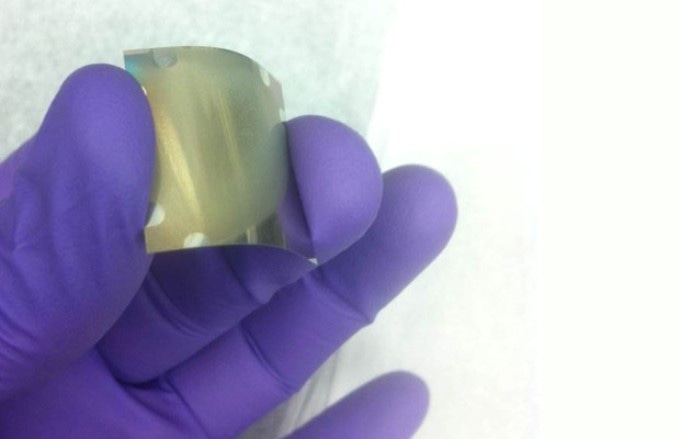Nov 16 2016
 Ohio State University researchers have developed a technique to create light emitting diodes on metal foil. (Image by Brelon J. May, courtesy of The Ohio State University.)
Ohio State University researchers have developed a technique to create light emitting diodes on metal foil. (Image by Brelon J. May, courtesy of The Ohio State University.)
A team of engineers from Ohio State University have created LEDs on lightweight flexible metal foil for the first time. They designed the foil-based LEDs for portable UV lights which can be used by soldiers and others to sterilize medical equipment and purify drinking water.
In the journal Applied Physics Letters, the researchers explain the method applied to design the LEDs to shine in the high-energy “deep” end of the UV spectrum. The university plans to license the technology to industry for further development.
Roberto Myers, associate professor of materials science and engineering at Ohio State explains that the military, industry, and humanitarian organizations already use deep UV light for applications ranging from detection of biological agents to curing plastics.
The issue is that traditional deep-UV lamps are very heavy and difficult to carry around.
Right now, if you want to make deep ultraviolet light, you’ve got to use mercury lamps. Mercury is toxic and the lamps are bulky and electrically inefficient. LEDs, on the other hand, are really efficient, so if we could make UV LEDs that are safe and portable and cheap, we could make safe drinking water wherever we need it.
Roberto Myers, Associate Professor, Ohio State University
He noted that other research groups have fabricated deep-UV LEDs at the laboratory scale, but only by using extremely pure, rigid single-crystal semiconductors as substrates - an approach that forces a huge cost hurdle for industry.
Foil-based nanotechnology may be able to facilitate large-scale production of a cheaper, lighter, and more environmentally friendly deep-UV LED. But Myers and materials science doctoral student Brelon J. May anticipate that their technology will be able to achieve more: transform a niche research field known as nanophotonics into a feasible industry.
People always said that nanophotonics will never be commercially important, because you can’t scale them up. Well, now we can. We can make a sheet of them if we want. That means we can consider nanophotonics for large-scale manufacturing.
Roberto Myers, Associate Professor, Ohio State University
In part, this new development relies upon a proven semiconductor growth method known as molecular beam epitaxy, where vaporized elemental materials come to rest on a surface and self-organize into nanostructures or layers.
The research team used this method to grow a carpet of densely-packed aluminum gallium nitride wires on pieces of metal foil such as tantalum and titanium. The individual wires measure about 200 nm in height and about 20 - 50 nm in diameter, which when compared to a human hair is thousands of times narrower. It is also invisible to the naked eye.
In lab tests, the nanowires grown on metal foils glowed almost as brightly as those produced on the more expensive and less flexible single-crystal silicon.
The Ohio State researchers are currently involved in making the nanowire LEDs even brighter, and will subsequently try to grow the wires on foils produced from more common metals, including aluminum and steel.
This research received funding from the Army Research Office and the National Science Foundation. Study co-author A.T.M. Golam Sarwar earned his doctoral degree in the course of this work at Ohio State, and is now working at Intel.